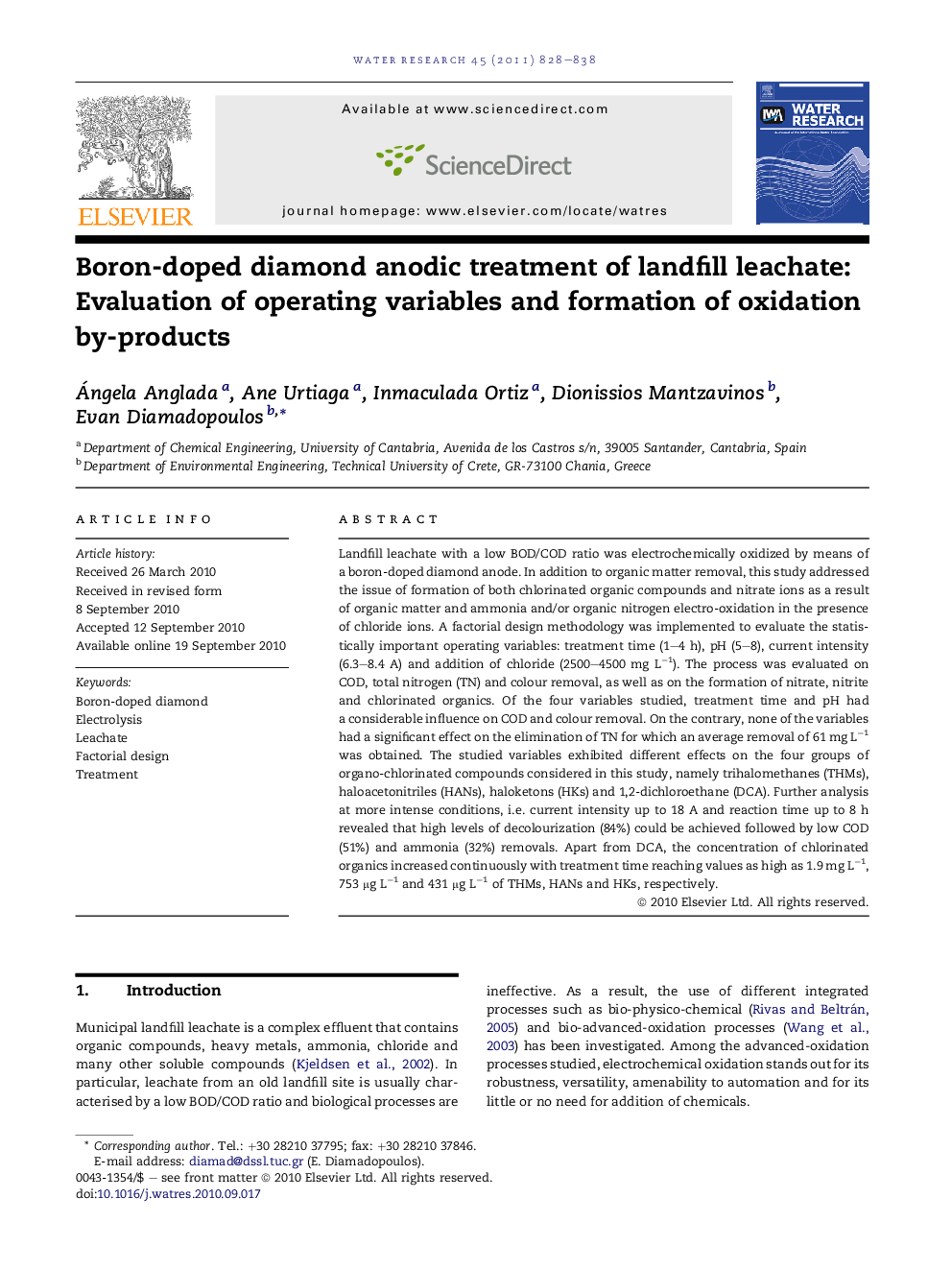| کد مقاله | کد نشریه | سال انتشار | مقاله انگلیسی | نسخه تمام متن |
|---|---|---|---|---|
| 6368015 | 1316896 | 2011 | 11 صفحه PDF | دانلود رایگان |
عنوان انگلیسی مقاله ISI
Boron-doped diamond anodic treatment of landfill leachate: Evaluation of operating variables and formation of oxidation by-products
دانلود مقاله + سفارش ترجمه
دانلود مقاله ISI انگلیسی
رایگان برای ایرانیان
کلمات کلیدی
موضوعات مرتبط
مهندسی و علوم پایه
علوم زمین و سیارات
فرآیندهای سطح زمین
پیش نمایش صفحه اول مقاله

چکیده انگلیسی
Landfill leachate with a low BOD/COD ratio was electrochemically oxidized by means of a boron-doped diamond anode. In addition to organic matter removal, this study addressed the issue of formation of both chlorinated organic compounds and nitrate ions as a result of organic matter and ammonia and/or organic nitrogen electro-oxidation in the presence of chloride ions. A factorial design methodology was implemented to evaluate the statistically important operating variables: treatment time (1-4 h), pH (5-8), current intensity (6.3-8.4 A) and addition of chloride (2500-4500 mg Lâ1). The process was evaluated on COD, total nitrogen (TN) and colour removal, as well as on the formation of nitrate, nitrite and chlorinated organics. Of the four variables studied, treatment time and pH had a considerable influence on COD and colour removal. On the contrary, none of the variables had a significant effect on the elimination of TN for which an average removal of 61 mg Lâ1 was obtained. The studied variables exhibited different effects on the four groups of organo-chlorinated compounds considered in this study, namely trihalomethanes (THMs), haloacetonitriles (HANs), haloketons (HKs) and 1,2-dichloroethane (DCA). Further analysis at more intense conditions, i.e. current intensity up to 18 A and reaction time up to 8 h revealed that high levels of decolourization (84%) could be achieved followed by low COD (51%) and ammonia (32%) removals. Apart from DCA, the concentration of chlorinated organics increased continuously with treatment time reaching values as high as 1.9 mg Lâ1, 753 μg Lâ1 and 431 μg Lâ1 of THMs, HANs and HKs, respectively.
ناشر
Database: Elsevier - ScienceDirect (ساینس دایرکت)
Journal: Water Research - Volume 45, Issue 2, January 2011, Pages 828-838
Journal: Water Research - Volume 45, Issue 2, January 2011, Pages 828-838
نویسندگان
Ángela Anglada, Ane Urtiaga, Inmaculada Ortiz, Dionissios Mantzavinos, Evan Diamadopoulos,